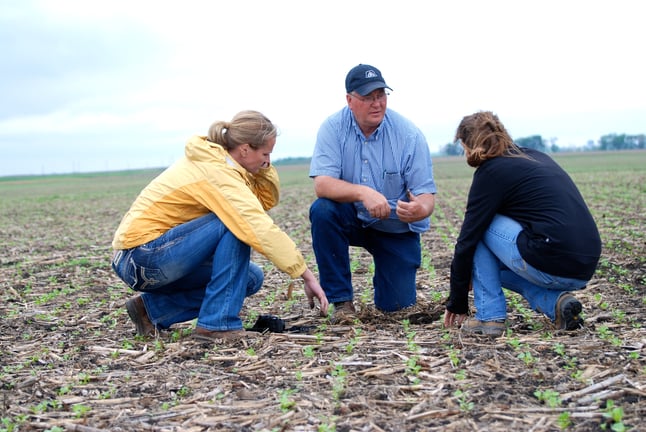Cover Crops and Strip-Till: A Winning Combination for Soil Health
The more Iowa farmer Ben Pederson hears about the use of cover crops, the more convinced he is that it was the right addition to his current cropping practices. Already a strong advocate for strip-tillage, Pederson believes the use of cover crops in his cropping program was an obvious addition. In 2013, when heavy rains prevented him from planting crops, he used cover crops to prevent erosion and depleted soil health. The positive advantage he saw from the cover crops led him to incorporate them during a normal growing season the following year.
“I believe using strip-tillage with cover crops is an obvious combination,” Pederson says. “Why would you build soil health with cover crops just to destroy it with full-surface tillage? It becomes a zero-sum event.”

Canadian farmer Mike Verdonck agrees. “More and more farmers are looking to use cover crops to improve soil health, and I think, over the next five years, we will see many more farmers using cover crops, but they won’t work in a conventional tillage program. Tillage has become the silent killer of our soils. We have to work to build the soils back up by incorporating more biodiversity and using less tillage.”
Abbey Wick, a North Dakota State University soil health specialist, works with farmers in North Dakota to integrate new practices that improve productivity and soil health. One frequent area of conversation with farmers is learning to incorporate cover crops into current cropping programs.
“There’s a lot of talk about cover crops right now,” Wick says. “Farmers are hearing about the benefits of cover crops, so they are looking to see how they can incorporate them into existing programs. It is another piece of the puzzle for crop management.”
Wick says that erosion control, moisture management and residue cover are the drivers for famers looking to use cover crops.

“The first step to using cover crops is to determine the individual goals for incorporating cover crops,” Wick says. “Keeping soil in place and having something green and growing early in the spring to warm up the soils and control moisture is a big consideration.”
Pederson uses cover crops to keep his fields as green as possible. He believes that having the fields covered helps with erosion control and improves the overall condition of his soil.
“From an environmental benefit, it makes sense to soak up some of the nitrogen in the cover crop and hold it for next year’s crop, making the nutrient more readily available rather than just sitting in the soil,” Pederson says.
Prior to 2013 and the poor crop year, Pederson was stuck in what he calls “paralysis by analysis,” trying to answer all the questions before he started planting cover crops. He still doesn’t have all the answers, but believes he is headed in the right direction.
“Using cover crops is like building a recipe,” Verdonck says. “You have to identify your problem and then determine the best solution. Most farmers start with cereal rye and then build from there. If compaction is an issue, plant radishes; if the soil needs nitrogen, use peas or alfalfa; to control disease, plant oats. There are many combinations, but first you have to know your soil and what is needed.”

Being an early adopter of cover crops, Verdonck gets many questions from his peers. Most are concerned about yield drag and overall productivity. Based on his experiences, Verdonck can see the profitability of using strip tillage with cover crops.
“My cost of production is lower, and yet I’ve had no yield drag,” Verdonck says. “When I look at acres per hour, manpower, and less fuel, nothing beats it. Efficient farms have to go with strip till, especially in northern climates where the soils are cold. Strip till is the perfect low-cost production/high-efficiency system. Comparing 250 acres of conventional tillage with two passes in the spring and ripping in the fall, the strip-till system saves us 32 hours of tractor work and 331 gallons of fuel.”
Verdonck plans to continue incorporating more cover crops into his crop management, with a target goal of 100 percent strip-till in the next two years.
“When I look at my yield maps and see nice even colors, I know we are doing the right thing for the soil, and that is what matters,” Verdonck stresses.


Comment